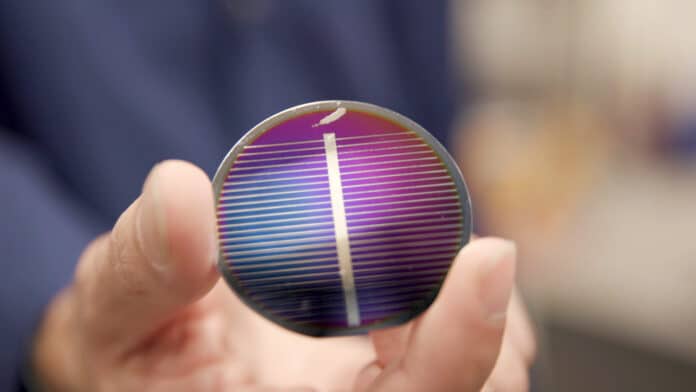NASA has awarded Blue Origin a US$35-million Tipping Point contract to continue advancing its innovative Blue Alchemist breakthrough revealed earlier this year.
The technology is a proposed end-to-end, autonomous, and commercial solution that produces solar cells and transmission wires from lunar regolith, which is the dust and crushed rock abundant on the surface of the Moon.
Based on a process called molten regolith electrolysis, the breakthrough would bootstrap unlimited electricity and power transmission cables anywhere on the surface of the Moon.
Its proprietary transport subsystem moves and separates molten material at temperatures above 1600 degrees Celsius in a controlled and power-efficient manner while withstanding the high-temperature, corrosive environment.
By passing a current through the molten regolith, the electrolysis extracts metals, including iron, aluminum, and silicon, from the oxygen to which they are bound. The rising oxygen bubbles in one of the reactors show metals and metalloids being separated from oxygen.
The end product is more than 99.999% pure silicon, suitable for solar cells. The company claims that Blue Alchemist manufactures solar cells with zero carbon emissions, no water, and no toxic ingredients or other chemicals. This process also produces oxygen as a useful byproduct for propulsion and life support.
The technology can scale indefinitely, eliminating power as a constraint anywhere on the Moon. The firm believes that space technology could also be utilized to make more environmentally friendly systems for use on Earth to help fight climate change.
According to NASA, a technology like Blue Alchemist is considered at a Tipping Point if the agency’s investment can help grow the innovation into a viable commercial solution. The new investment will result in a demonstration of autonomous operation in a simulated lunar environment by 2026.
“Harnessing the vast resources in space to benefit Earth is part of our mission, and we’re inspired and humbled to receive this investment from NASA to advance our innovation,” said Pat Remias, vice president Capabilities Directorate of Space Systems Development, in a statement. “First, we return humans to the Moon; then we start to ‘live off the land.'”
